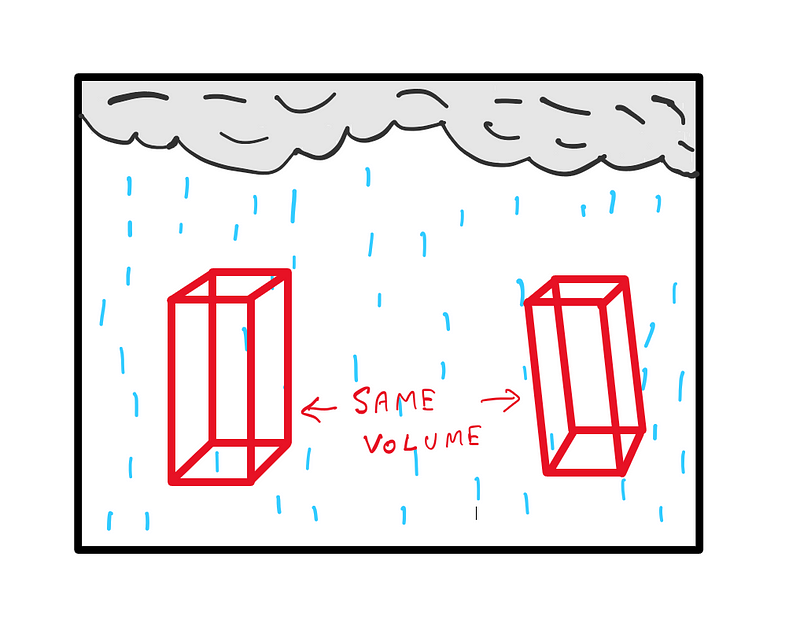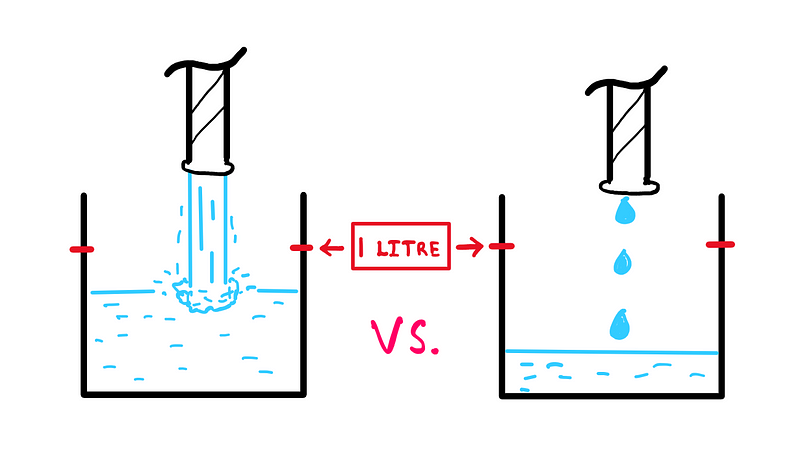The Ultimate Guide to Staying Dry: Walk or Run in the Rain?
Written on
Chapter 1: Introduction to the Dilemma
When caught in the rain unexpectedly, is it better to walk or run? This question first intrigued me at a young age, around four or five. I noticed that moving quickly seemed to make the rain feel heavier, a sensation familiar to anyone who has cycled in the rain.
A memorable moment occurred when I was about ten years old, walking home with friends after playtime. Suddenly, a downpour hit us, and we dashed for shelter about a kilometer away. While running, we encountered an older group of kids. One of them chuckled and remarked, "If you run in the rain, you'll just get wetter faster. You might as well walk and arrive less soaked." This comment resonated with me, and I began to consider the validity of his claim but never pursued an answer—until recently.
Interestingly, I discovered a research paper that delves into this very scenario (details found in the references section). In this article, I will break down the problem into two fundamental puzzles and ultimately combine them to address our main question.
Section 1.1: Defining the Problem
Imagine you suddenly find yourself in the rain without an umbrella or raincoat, with the nearest shelter 500 meters away. You face a choice: run or walk. Which option will leave you drier?
To analyze this, let's establish a few simplified assumptions. First, we will assume the rainfall rate is constant—though we know this isn't always true, it helps us reach a quick conclusion. Second, we will separate the impact of rain into two components: vertical and horizontal exposure.
Regardless of whether you run, walk, or stay still, you'll experience rainfall from above, known as vertical exposure. If you are moving, you'll also face horizontal exposure due to your movement through the rain.
Now that we have framed our problem, let’s tackle the puzzles.
Section 1.2: Puzzle 1 - Vertical Water Exposure
To simplify the situation, we can represent the path of a person as a geometric shape—a three-dimensional parallelepiped. We can consider two variations: a straight one and a tilted one.

The crucial insight is that whether the parallelepiped is tilted or straight, its volume remains unchanged. This implies that regardless of how fast you move horizontally, your exposure to vertical rainfall remains constant, provided the exposure time is the same. Essentially, you will be transitioning from one raindrop to another (assuming consistent rainfall).
In summary, the only factor affecting vertical exposure is time, a vital point we'll revisit later.
Subsection 1.2.1: Puzzle 2 - Horizontal Water Exposure
For horizontal exposure, the faster you travel, the more rain you accumulate. However, the principle of the parallelepiped still applies. As long as you have a defined start and end point, the total volume of water remains constant, irrespective of your speed.
Think of it this way: if your aim is to fill a container with one liter of water, you can expedite the process by increasing the flow, but the total volume remains the same.

The key takeaway is that the only element that can affect horizontal exposure is the distance to the shelter.
Chapter 2: The Final Answer
Having addressed both puzzles, we can now answer the main question: Should you walk or run in the rain?
So far, we’ve established two key facts:
- Vertical water exposure increases with longer exposure time.
- Horizontal water exposure rises with greater distance to shelter.
Given that the distance to shelter is fixed at 500 meters, the horizontal water exposure remains unchanged. Therefore, to minimize the total amount of rain collected, you should aim to reduce vertical exposure by minimizing the time spent in the rain. The only way to achieve this is by moving faster.
Thus, the conclusion is clear: you should RUN!
What I have presented here is a basic analysis of this dilemma. For those interested in a more detailed exploration with fewer assumptions, I recommend checking out the referenced research paper.
For anyone simply eager to find an answer to this long-standing question, I encourage you to practice running in wet conditions. Good luck!
The first video titled "Is it Better to Walk or Run in the Rain?" explores the dynamics of staying dry during rain and provides further insights into this dilemma.
The second video, "Walking vs. Running in the Rain," compares the two methods and discusses their impacts on water exposure, adding depth to the discussion.
Reference: Whether or not to run in the rain — Franco Bocci (research paper).
Credit: Henry Reich.
I hope this article has been both enlightening and helpful. If you wish to support my work, consider clapping, following, and subscribing.
For further reading, you might find these topics interesting: "How To Tell A Real Law From A Fake One?" and "Why Do You See Mirrors Flipping Words?"
You can also read the original essay here.